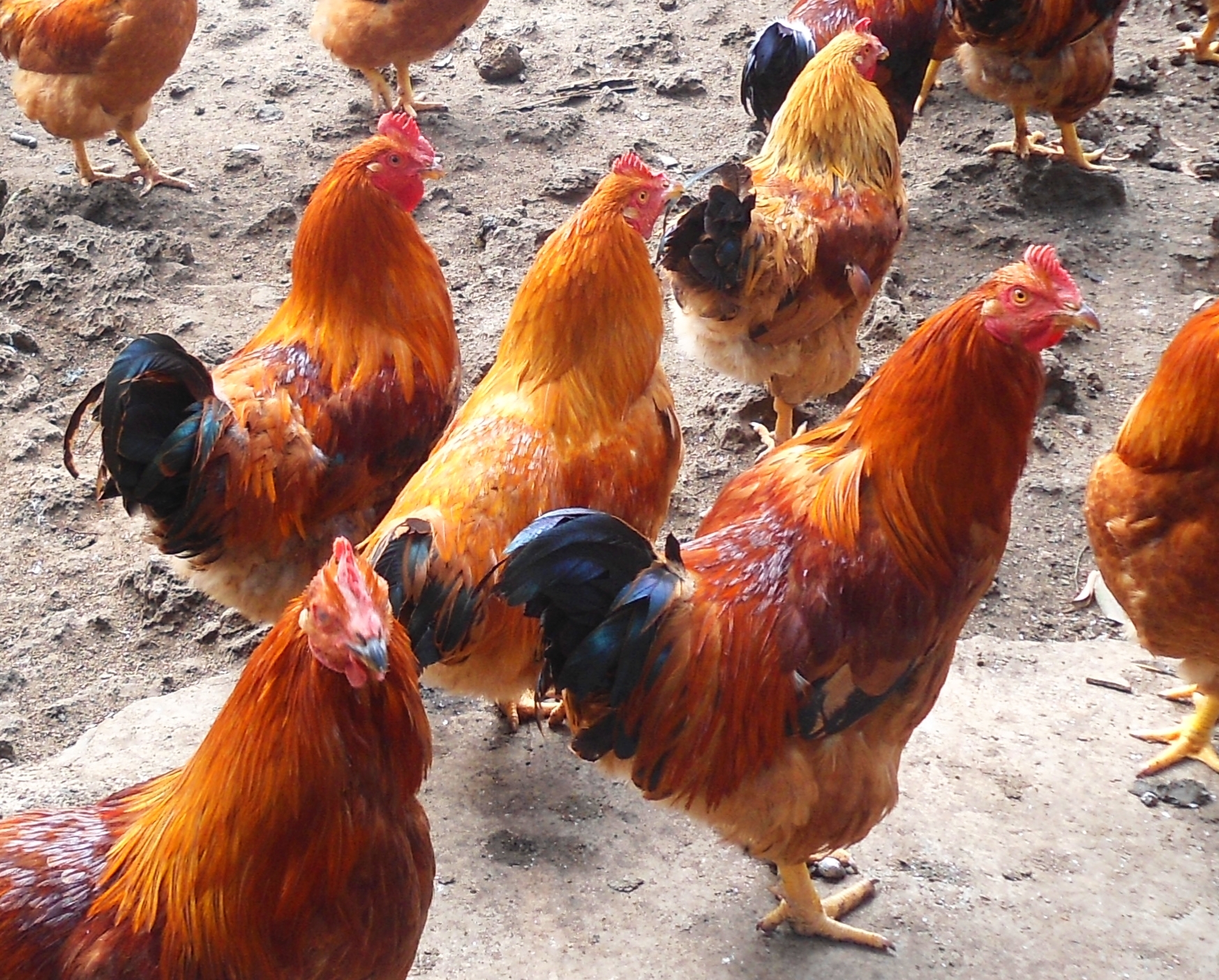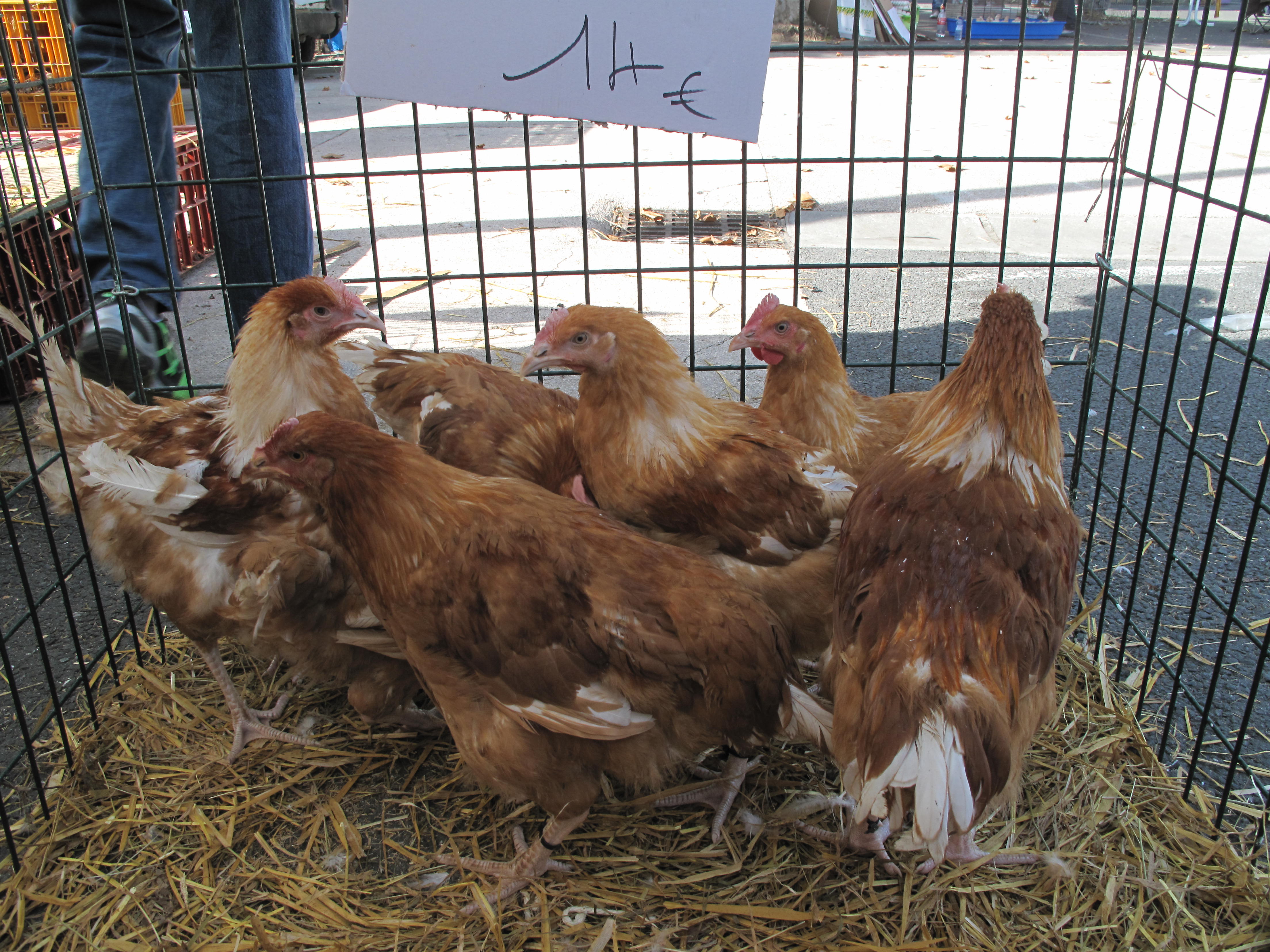Capon on:
[Wikipedia]
[Google]
[Amazon]
 A capon (from la, cāpō, genitive ''cāpōnis'') is a
A capon (from la, cāpō, genitive ''cāpōnis'') is a
 The origins of caponised chickens are contested. They were known in ancient
The origins of caponised chickens are contested. They were known in ancient
 Capons are produced in France, in several provinces, notably the
Capons are produced in France, in several provinces, notably the
File:2257 - Salzburg - St Peter's Stiftskeller - Brust vom gebratenen Capaun auf Gemüse aus Pater Priors Garten mit Sterztaler und Erdäpfelbirne an Salbei-Trüffelrahm.JPG
File:Chapon jaune des Landes aux marrons.jpg
File:Capon Prior to Roasting.jpg
File:Chapon DSC09884.jpg
File:FMIB 48921 Capon to Roast - a Successful Efford.jpeg
File:David Rijckaert (II) - Still life with capon, oysters, bread, pastries, various glasses and a goblet.jpg
"Easy-On" Caponizing Set
Surgery instructions from a home kit, published for Sears, Roebuck & Co. {{Chicken Veterinary castration Poultry farming Chickens
 A capon (from la, cāpō, genitive ''cāpōnis'') is a
A capon (from la, cāpō, genitive ''cāpōnis'') is a cockerel
The chicken (''Gallus gallus domesticus'') is a domesticated junglefowl species, with attributes of wild species such as the grey and the Ceylon junglefowl that are originally from Southeastern Asia. Rooster or cock is a term for an adult m ...
( rooster) that has been castrated or neutered, either physically or chemically, to improve the quality of its flesh for food, and, in some countries like Spain
, image_flag = Bandera de España.svg
, image_coat = Escudo de España (mazonado).svg
, national_motto = '' Plus ultra'' (Latin)(English: "Further Beyond")
, national_anthem = (English: "Royal March")
, ...
, fattened by forced feeding.
History
 The origins of caponised chickens are contested. They were known in ancient
The origins of caponised chickens are contested. They were known in ancient China
China, officially the People's Republic of China (PRC), is a country in East Asia. It is the world's List of countries and dependencies by population, most populous country, with a Population of China, population exceeding 1.4 billion, slig ...
as well as in ancient Greece
Ancient Greece ( el, Ἑλλάς, Hellás) was a northeastern Mediterranean civilization, existing from the Greek Dark Ages of the 12th–9th centuries BC to the end of classical antiquity ( AD 600), that comprised a loose collection of cu ...
and ancient Rome
In modern historiography, ancient Rome refers to Roman people, Roman civilisation from the founding of the city of Rome in the 8th century BC to the collapse of the Western Roman Empire in the 5th century AD. It encompasses the Roman Kingdom ...
.
An early record of caponisation is found under the Roman Republic
The Roman Republic ( la, Res publica Romana ) was a form of government of Rome and the era of the classical Roman civilization when it was run through public representation of the Roman people. Beginning with the overthrow of the Roman Ki ...
: the Lex Faunia of 162 BC forbade fattening hens to conserve grain
A grain is a small, hard, dry fruit ( caryopsis) – with or without an attached hull layer – harvested for human or animal consumption. A grain crop is a grain-producing plant. The two main types of commercial grain crops are cereals and legum ...
rations, so the Romans instead castrated roosters, which resulted in a doubling of size.
It was also practiced later throughout medieval times, with gastronomic texts describing capons as preferred poultry since the ordinary fowl of the farmyard was regarded as peasant fare and "popular malice crediting monks with a weakness for capons."
France is internationally renowned for maintaining a strong caponisation tradition with widespread and established industries throughout the country.
William Shakespeare
William Shakespeare ( 26 April 1564 – 23 April 1616) was an English playwright, poet and actor. He is widely regarded as the greatest writer in the English language and the world's pre-eminent dramatist. He is often called England's nation ...
mentioned capon in the famous " All the world's a stage" monologue from his play ''As You Like It
''As You Like It'' is a pastoral comedy by William Shakespeare believed to have been written in 1599 and first published in the First Folio in 1623. The play's first performance is uncertain, though a performance at Wilton House in 1603 h ...
'' (written c.1600). He similarly describes capon as a food of the wealthy. The monologue describes human life as consisting of seven stages, and the fifth stage is a middle-aged man who has reached the point where he has acquired wisdom and wealth. The monologue describes the fifth stage as: "The Justice, In fair round belly, with a good capon lin'd". In addition his character Sir John Falstaff is described as or implied to be fond of capons.
Effects of caponisation
Caponisation is the process of turning a cockerel into a capon. Caponisation can be done by surgically removing the bird'stestes
A testicle or testis (plural testes) is the male reproductive gland or gonad in all bilaterians, including humans. It is homologous to the female ovary. The functions of the testes are to produce both sperm and androgens, primarily testoste ...
, or may also be accomplished through the use of estrogen
Estrogen or oestrogen is a category of sex hormone responsible for the development and regulation of the female reproductive system and secondary sex characteristics. There are three major endogenous estrogens that have estrogenic hormonal ac ...
implants. With either method, the male sex hormones normally present are no longer effective. Caponisation must be done before the rooster matures so that it develops without the influence of male sex hormones.
Capons, due to the lack of the male sex drive, are not as aggressive as normal roosters. This makes capons easier to handle and allows capons to be kept together with other capons since their reduced aggression prevents them from fighting.
The lack of sex hormones results in meat that is less gamey in taste. Capon meat is also more moist, tender and flavorful than that of a cockerel or a hen, which is due not only to the hormonal differences during the capon's development but also because capons are not as active as roosters, which makes their meat more tender and fatty.
Capons develop a smaller head, comb
A comb is a tool consisting of a shaft that holds a row of teeth for pulling through the hair to clean, untangle, or style it. Combs have been used since prehistoric times, having been discovered in very refined forms from settlements dating ba ...
and wattle than those of a normal rooster.
Capons are fairly rare in industrial meat production
The meat industry are the people and companies engaged in modern industrialized livestock agriculture for the production, packing, preservation and marketing of meat (in contrast to dairy products, wool, etc.). In economics, the meat industry i ...
. Chickens raised for meat are bred and raised so that they mature very quickly. Industrial chickens can be sent to market in as little as five weeks. Capons produced under these conditions will taste very similar to conventional chicken meat, making their production unnecessary.
Specialized production
 Capons are produced in France, in several provinces, notably the
Capons are produced in France, in several provinces, notably the Gers
Gers (; oc, Gers or , ) is a department in the region of Occitania, Southwestern France. Named after the Gers River, its inhabitants are called the ''Gersois'' and ''Gersoises'' in French. In 2019, it had a population of 191,377.
and Jura regions. It is a speciality of Bresse
Bresse () is a former French province. It is located in the regions of Auvergne-Rhône-Alpes and Bourgogne-Franche-Comté of eastern France. The geographical term ''Bresse'' has two meanings: ''Bresse bourguignonne'' (or ''louhannaise''), w ...
(Chapon de Bresse), where it has its own appellation to differentiate it from other capons from other regions. In Bresse, it is exclusively produced from the Bresse blue foot breed (patte bleue), and fed a certain diet which makes it even more tender than from other regions and breeds, making it a desirable meat.
Capons are also produced in many regions of northern Italy
Italy ( it, Italia ), officially the Italian Republic, ) or the Republic of Italy, is a country in Southern Europe. It is located in the middle of the Mediterranean Sea, and its territory largely coincides with the homonymous geographical ...
, such as Piedmont
it, Piemontese
, population_note =
, population_blank1_title =
, population_blank1 =
, demographics_type1 =
, demographics1_footnotes =
, demographics1_title1 =
, demographics1_info1 =
, demographics1_title2 ...
, Friuli-Venezia Giulia
(man), it, Friulana (woman), it, Giuliano (man), it, Giuliana (woman)
, population_note =
, population_blank1_title =
, population_blank1 =
, demographics_type1 =
, demographics1_footnotes =
, demographics1_t ...
, Emilia-Romagna
egl, Emigliàn (man) egl, Emiglièna (woman) rgn, Rumagnòl (man) rgn, Rumagnòla (woman) it, Emiliano (man) it, Emiliana (woman) or it, Romagnolo (man) it, Romagnola (woman)
, population_note =
, population_blank1_title ...
, and Marche
Marche ( , ) is one of the twenty regions of Italy. In English, the region is sometimes referred to as The Marches ( ). The region is located in the central area of the country, bordered by Emilia-Romagna and the republic of San Marino to the ...
. In the early 20th century, capon was commonly eaten for the main family feast on Christmas
Christmas is an annual festival commemorating the birth of Jesus Christ, observed primarily on December 25 as a religious and cultural celebration among billions of people around the world. A feast central to the Christian liturgical year ...
in Tuscany
it, Toscano (man) it, Toscana (woman)
, population_note =
, population_blank1_title =
, population_blank1 =
, demographics_type1 = Citizenship
, demographics1_footnotes =
, demographics1_title1 = Italian
, demogra ...
and northern Italian regions, which was a rare treat for peasant
A peasant is a pre-industrial agricultural laborer or a farmer with limited land-ownership, especially one living in the Middle Ages under feudalism and paying rent, tax, fees, or services to a landlord. In Europe, three classes of peasa ...
or working class
The working class (or labouring class) comprises those engaged in manual-labour occupations or industrial work, who are remunerated via waged or salaried contracts. Working-class occupations (see also " Designation of workers by collar colou ...
families.
In the gastronomy of Spain, capons are usually eaten during the Christmas season in the northern regions. Capons of Vilalba, Lugo
Lugo (, ; la, Lucus Augusti) is a city in northwestern Spain in the autonomous community of Galicia. It is the capital of the province of Lugo. The municipality had a population of 98,025 in 2018, making it the fourth most populous city in Ga ...
are particularly famous and are sold all over the country.
In China, capons are often raised specifically for consumption during Chinese New Year
Chinese New Year is the festival that celebrates the beginning of a new year on the traditional lunisolar and solar Chinese calendar. In Chinese and other East Asian cultures, the festival is commonly referred to as the Spring Festival () a ...
.
Legal status
In the UK physical caponisation was made illegal in 1982 via The Welfare of Livestock (Prohibited Operations) Regulations 1982. This was reinforced in 2007 by The Mutilations (Permitted Procedures) (England) Regulations 2007 which made castration of all domesticated birds illegal. It is not illegal to import castrated animals and capons are available for sale in the UK.Gallery
See also
* PoulardeReferences
External links
*"Easy-On" Caponizing Set
Surgery instructions from a home kit, published for Sears, Roebuck & Co. {{Chicken Veterinary castration Poultry farming Chickens